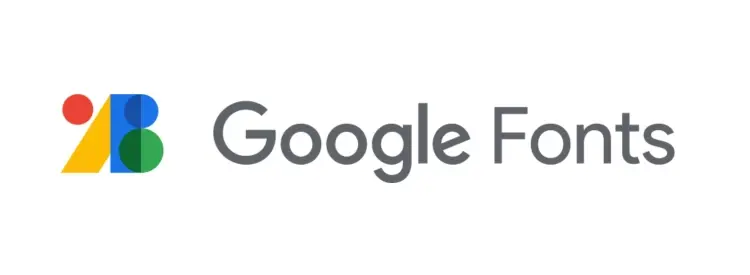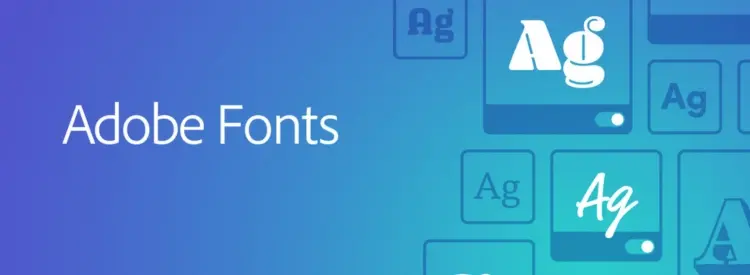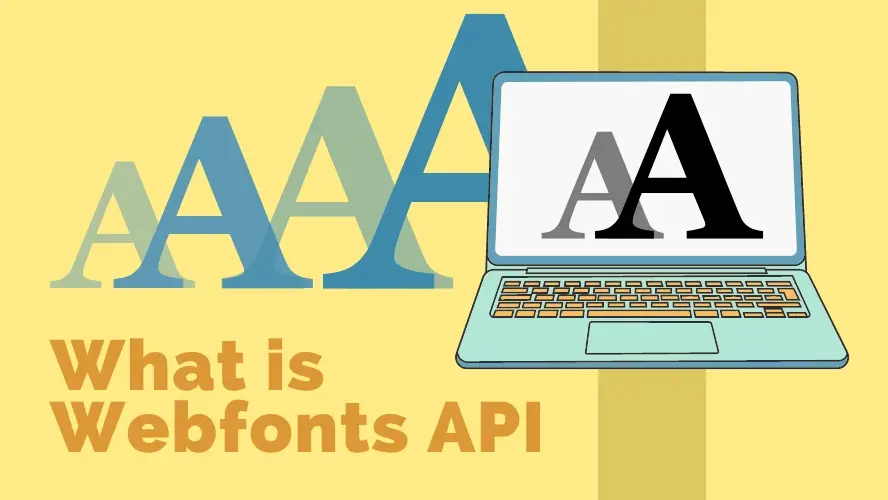Webfonts refer to custom fonts used on websites to enhance typography and design. Traditionally, websites were limited to using a small set of fonts as well as Web-Safe Fonts that were available on users' devices. Webfonts APIs allow website designers to use a wider variety of fonts without worrying about whether the font is installed on the user's device.
Why Webfonts API is important? And what benefits can you have when you enable it on your website? You can soon find out all about it in the following article section, where you will able to learn the Webfonts API best practices, how to implement as well as the methods to optimize it for your website. At the end of the article, you will also find a list of Webfonts API providers.
Why Webfonts API is Important?
Typography and Design
Webfonts allow designers to use a wide range of fonts that might not be available on users' devices. This enables websites to achieve unique, creative, and visually appealing typography, enhancing the overall design and user experience.
Consistency Across Devices
Using a Webfonts API ensures that the same font is displayed consistently across different devices and browsers. This helps maintain a consistent brand identity and design aesthetic. Webfonts can adapt to different screen sizes and resolutions, helping maintain legibility and design integrity across various devices.
Cross-Platform Compatibility
Webfonts APIs ensure that the chosen font renders correctly on various operating systems and browsers, reducing the risk of font-related compatibility issues.
Performance Optimization
Some Webfonts APIs offer optimizations such as font subsetting and compression, which can help reduce the font file size and improve website loading times. This method can be compared to self-hosting larger font files, especially when API providers use content delivery networks (CDNs) to deliver fonts efficiently.
Accessibility
Webfonts can be chosen with accessibility in mind, ensuring that text is easy to read for users with various visual impairments. Webfonts APIs also support fonts with characters from various languages and writing systems, making it easier to create multilingual and globally accessible websites.
Developer Convenience
Webfonts APIs simplify the process of integrating custom fonts into a website, requiring minimal coding effort. Developers can easily link to or embed font files without the need for complex font installation processes. Webfonts APIs enable designers and developers to quickly prototype and experiment with different fonts without the need to install them locally.
What are the Benefits of Using the Webfonts API?
Font Variety and Customization
Webfonts APIs provide access to a wide range of fonts that may not be available on users' devices. This allows designers to choose from an extensive library of fonts and customize typography to match their brand and design aesthetics.
Ease of Integration
Integrating web fonts using an API is often simpler than self-hosting or manual font installation. The API provides code snippets or links that can be easily inserted into your website's HTML or CSS.
Automatic Updates
With a Webfonts API, updates and improvements to the font are automatically applied to your website without requiring manual intervention. This ensures that your website remains up-to-date with the latest font enhancements.
Analytics and Monitoring
Certain Webfonts APIs like Google Fonts provide usage analytics and monitoring, allowing you to track font performance, usage trends, and other relevant metrics.
Reduced Maintenance
Webfonts APIs handle the technical aspects of font loading and rendering, reducing the need for ongoing maintenance and troubleshooting on your end.
Cost-Effectiveness
Many Webfonts APIs offer free access to a variety of fonts, reducing the need to invest in premium fonts or licenses.
How to Implement Webfonts API?
Implementing a Webfonts API involves a few steps to integrate and use custom fonts on your website. These methods may vary depending on the Webfonts API that you use. Below, is the outline of a general process for implementing a Webfonts API:
1. Choose a Webfonts API
Select a Webfonts API that suits your needs. Popular choices include Google Fonts, Adobe Fonts, and others. Research the available fonts, features, and documentation of your chosen API.
2. Select Fonts
Browse the API's font library and choose the fonts you want to use on your website. Consider factors like design, readability, compatibility, font pairing, and font psychology with your overall theme.
3. Get API Key (if applicable)
Some APIs might require you to sign up and obtain an API key for access. Follow the API provider's instructions to register and get your API key, if needed.
4. Integrate HTML Link or JavaScript
Depending on the API, you'll need to integrate either a link tag in the HTML head or a JavaScript code snippet to load the fonts. The exact implementation will vary based on the API's documentation.
For example, using Google Fonts:
<link href="https://fonts.googleapis.com/css2?family=Font1|Font2&display=swap" rel="stylesheet">
5. Apply Fonts in CSS
In your CSS, define the font families and styles you want to use for different elements on your website. You'll reference the fonts you selected from the API.
For example:
body {
font-family: 'Font1', sans-serif;
}
h1 {
font-family: 'Font2', serif;
}
6. Customize and Style Adjust font sizes, weights, styles, and other typography settings to achieve the desired design and layout. Use CSS properties to fine-tune the appearance of your text.
7. Test and Optimize Preview your website in different browsers and devices to ensure that the fonts are loading correctly and rendering as expected. Test for performance and ensure that the fonts do not significantly impact page load times.
8. Handle Fallbacks
Define fallback fonts in your CSS in case the web fonts fail to load or a user's device doesn't support them. This ensures that your content remains readable even if the web fonts don't load.
For example:
body {
font-family: 'Font1', sans-serif, Arial, sans-serif;
}
Webfonts API Best Practices
Implementing Webfonts using an API involves several best practices to ensure optimal performance, accessibility, and design consistency. Here are some key best practices for using Webfonts API:
1. Choose Fonts Wisely
Select fonts that align with your website's design and branding, while also considering readability and legibility. Avoid using too many fonts to maintain a cohesive design.
2. Prioritize Performance
- Use font subsets: If the API supports it, select only the characters you need to reduce the font file size.
- Enable font-display: Use the font-display property to control font rendering behavior while the font is loading.
- Minimize requests: Combine fonts and other assets to reduce the number of HTTP requests.
3. Use a Preloader
Implement a preloader to ensure that critical fonts are loaded early, enhancing the user experience and avoiding the "flash of unstyled text" (FOUT) effect.
4. Fallback Fonts
Define fallback fonts in your CSS to ensure readability in case web fonts fail to load. Use generic font families (e.g., serif, sans-serif) as backup options.
5. Set Font Weights and Styles
Specify font weights and styles explicitly to avoid browser-induced font style variations. Use font-weight and font-style properties.
6. Optimize for Accessibility
- If the API offers font subsets or other optimization features, explore ways to minimize the font file size and improve loading times.
- Choose accessible fonts: Prioritize fonts that offer good contrast and legibility for users with visual impairments.
- Test with screen readers: Ensure that your chosen fonts are read accurately by screen readers.
7. Load Asynchronously
Load web fonts asynchronously using techniques like the async attribute for script tags or JavaScript-based solutions to prevent blocking the rendering of your page.
8. Cache-Control
Leverage browser caching and set appropriate cache expiration headers for web font files to improve subsequent page loads.
9. CDN Usage
If available, consider using a content delivery network (CDN) to deliver web font files, as CDNs can enhance font delivery speed.
10. Consistent Implementation
Ensure that web fonts are consistently implemented across your entire website to maintain design coherence. Avoid mixing different fonts haphazardly.
11. Test Cross-Browser Compatibility
Test your web fonts across various browsers and devices to ensure consistent rendering and behavior.
12. Monitor Performance
Regularly monitor your website's performance using tools like Google PageSpeed Insights or Lighthouse to identify any font-related performance issues.
13. Upgrade Deprecated Fonts
Keep an eye on your chosen web fonts to ensure they're up to date and haven't been deprecated or removed by the API provider.
14. Responsive Design
Optimize fonts for responsive design to ensure they look good on various screen sizes and orientations.
15. Documentation and Credits
Follow the API provider's guidelines for attribution or any required usage documentation.
16. Regular Review
Regularly review and audit your website's typography to ensure fonts are still aligned with your design goals and content and make any necessary adjustments over time.
Webfonts API Providers
There are several reputable Webfonts API providers that offer a wide variety of fonts and tools for integrating them into your websites.
Google Fonts

It offers a large collection of free and open-source fonts that can be easily integrated into your website using a simple <link> tag.
Adobe Fonts (formerly Typekit)

It provides a subscription-based service that gives you access to a vast library of high-quality fonts. The Webfonts API allows you to easily integrate these fonts into your web projects.
Font Awesome

This Webfonts provider is known for its icon fonts, but it also offers a webfonts API that allows you to use its icon sets and scalable vector icons in your web applications.
Fonts.com Web Fonts

Fonts.com offers a Webfonts API that provides access to a diverse collection of fonts for your web projects. It includes various features for font customization and management.
Fontstand

Fontstand is a unique platform that allows you to rent and test fonts for your design projects, including web use. It provides access to a curated collection of high-quality fonts.
SkyFonts by Monotype

SkyFonts is a tool by Monotype that enables you to sync and manage fonts from various sources, including Google Fonts and Fonts.com, for use in your design and development projects.
Conclusion
Webfonts APIs play a crucial role in enhancing the visual appeal, consistency, cross-platform compatibility, and accessibility of websites, while also providing developers with convenient tools for integrating and managing custom fonts.
Remember that the exact steps and implementation may vary based on the chosen Webfonts API. Always refer to the official documentation provided by the API provider for accurate instructions and best practices. By following these best practices, you can effectively integrate web fonts using an API while ensuring an optimal user experience, performance, and design consistency on your website.
Frequently Asked Questions
How do I choose a design for my website?
One of the most important things when creating a website for your art is the design. Even though your pieces of art might be amazing, people will leave if your site is hard to navigate. This is why it’s important that the site is easy on the eyes and easy to navigate.
How is the website maintenance carried out?
On a daily basis, software, hardware, vulnerability, MariaDB, CloudLinux paths and cPanel updates are carried out on our servers without a reboot. However, if we have to carry out any maintenance that includes some downtime, we schedule in advance and update our status page
What are the hosting options with a website builder?
Most website builders offer a free plan with a free domain, but your name will go after the company's name. To get any address you like, you will need to purchase the domain name on your own.
What are the customization options with a website builder?
Although website builders usually have some customization settings, like templates, fonts, margins editing, and so on, when compared to CMSs, it lacks customization options.

Audee Mirza is a graphic designer and WordPress developer at audeemirza.com who resides in Surabaya, Indonesia. She's also the author of Graphic Identity Blog, a professional logo designer, and often creates vector illustrations for clients and marketplaces. She enjoys good typography design and all kinds of animation.
View all posts by Audee Mirza




















